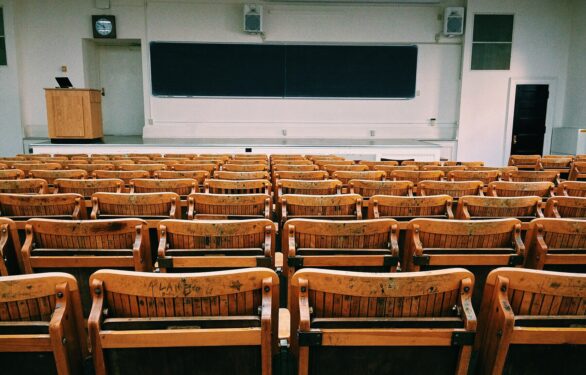Higher education is facing a crisis. Before the pandemic, new college grads were struggling to find consistent incomes to pay back massive student loan debts. Entry level employment was in jeopardy, making landing on solid financial footing post-graduation increasingly difficult. The inherent value of obtaining a college diploma was being questioned. Meanwhile, this shifting landscape meant schools were being forced to make drastic business model changes.
The COVID-19 pandemic has now left colleges and universities across the country reeling. Arguably the biggest financial question in the history of higher education is pushed to the forefront: How do schools keep students and faculty healthy and safe from the spread of disease without going bankrupt in the process?
Forced shift to virtual learning.
With schools shuttered across the country, students unexpectedly found themselves at home for the bulk of the 2020 spring term. Remotely managing their course loads in virtual classroom settings seemed farfetched at first. But as the weeks wore on, remote learning became less daunting. What was originally viewed as a temporary Band-Aid during a nationwide shutdown now appears to be here to stay, at least for the near future. The result? Students were living at home while continuing their studies instead of attending college in person. Schools were forced to make big enhancements to their online curriculum to justify hanging on to spring tuition payments. Even with the buildout of online resources, students continue to push back, arguing for tuition reimbursements while campus doors were closed.
Revenues are upended.
To stay competitive in light of COVID-19, colleges are adjusting their balance sheets. The pandemic fallout is causing slashes to school revenues, creating the need for staff reductions and worker furloughs. What the fall semester will even look like is anyone’s guess. Even if students can safely return to campus, college life will likely never be the same. School overhead will increase substantially with enhanced cleaning and sanitation practices alone. Creating viable student housing and classroom settings conducive to social distancing will become a necessity. As the well-being of the student body and staff has never been more in the spotlight, the number of changes required to offer a safe educational environment seem to be infinite.
College towns reeling.
College towns are taking a big hit without students renting apartments, filling local eateries, frequenting bars and restaurants, and shopping in retail stores. If schools are unable to bring students back for a normal fall semester, the consequences in those communities could be devastating. Entire local economies are fully dependent on the influx of students at the end of the summer. The college sports industry alone reliably brings fans pouring into towns, along with big annual events and festivals. If the fall rolls around without gameday crowds and large public gatherings, college towns will take an ever bigger hit to their pocketbooks, creating a big cashflow drag for local economies.
What the future holds.
It is difficult to say what is in store for the higher education business model. The COVID-19 pandemic has brought many instabilities to the forefront. Public universities with solid reputations will likely fare far better than many smaller, private institutions with less clout. Schools may fold altogether if left with no other viable options. Regardless, the entire system of higher education will be forced to quickly pivot or face dire consequences. What that means in the long run for students, faculty, and the local economies remains to be seen.
